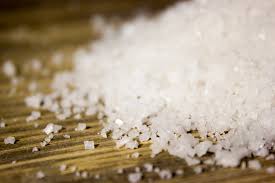Blog
Ketamine Crystals Vs Powder

Ketamine Crystals Vs Powder, Ketamine, originally developed as an anesthetic, has gained attention for its therapeutic potential in treating depression, anxiety, and PTSD. However, it’s also used recreationally, often in different forms — primarily ketamine crystals and ketamine powder. Though both contain the same active compound, their form, use, and effects can vary significantly. In this article, we’ll explore the differences between ketamine crystals vs powder, shedding light on their characteristics, usage methods, and safety considerations.
What Are Ketamine Crystals?
Ketamine crystals are the raw, crystalline form of the drug, usually resulting from the evaporation of a ketamine solution. These crystals appear as translucent shards or chunks, somewhat similar to salt or sugar crystals. In this form, the substance is typically more stable and pure, making it ideal for controlled pharmaceutical processing.
What Is Ketamine Powder?
Ketamine powder is created by grinding or crushing ketamine crystals into a fine, dry substance. This powder is often the preferred form for recreational use due to ease of handling and administration — especially via intranasal routes (snorting). It may vary in color from white to off-white depending on purity and any added substances.
Key Differences: Ketamine Crystals vs Powder
| Feature | Ketamine Crystals | Ketamine Powder |
|---|---|---|
| Form | Hard, crystalline chunks | Fine, dry powder |
| Purity | Typically higher purity | May contain additives or impurities |
| Usage | Pharmaceutical processing, can be crushed into powder | Commonly used recreationally |
| Dosage Control | Harder to dose accurately without preparation | Easier to measure with precision tools |
| Storage | Longer shelf life, less prone to degradation | More vulnerable to moisture and contamination |
Medical vs Recreational Use
In medical settings, ketamine is administered via injection or intravenous (IV) infusion, with strict dosing and monitoring. The crystalline form is often used in pharmaceutical manufacturing to create injectable solutions.
Recreational users, on the other hand, typically use the powder form. This raises risks due to unregulated production, potential contaminants, and varying potency. The onset of effects is faster when insufflated (snorted), but it also increases the chance of misuse or overdose.
Safety Considerations
When comparing ketamine crystals vs powder, safety is paramount. The purity of crystals makes them more reliable in clinical contexts. However, converting them into powder without proper handling can introduce impurities. Powder, especially if sourced illegally, may be adulterated with other harmful substances.
Important: Ketamine is a powerful dissociative drug. Non-medical use poses serious health risks, including addiction, memory issues, bladder problems, and psychological dependency.
Conclusion
Understanding the distinction between ketamine crystals vs powder is crucial for anyone involved in its medical use, research, or harm reduction advocacy. While the active substance remains the same, the form in which ketamine is processed and consumed greatly influences its effects, safety, and applications. Always consult medical professionals for guidance and be aware of the legal and health implications associated with ketamine use.
